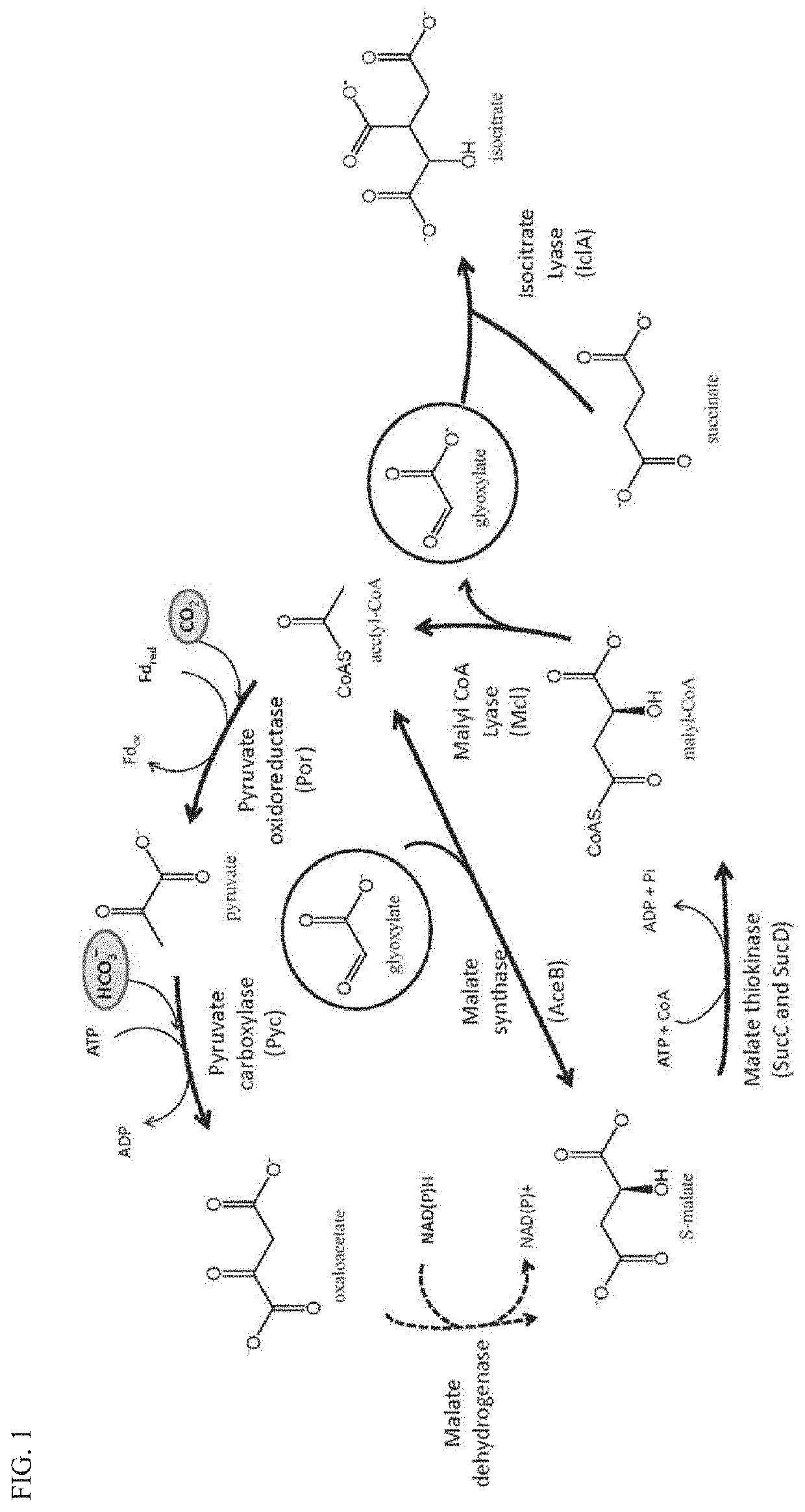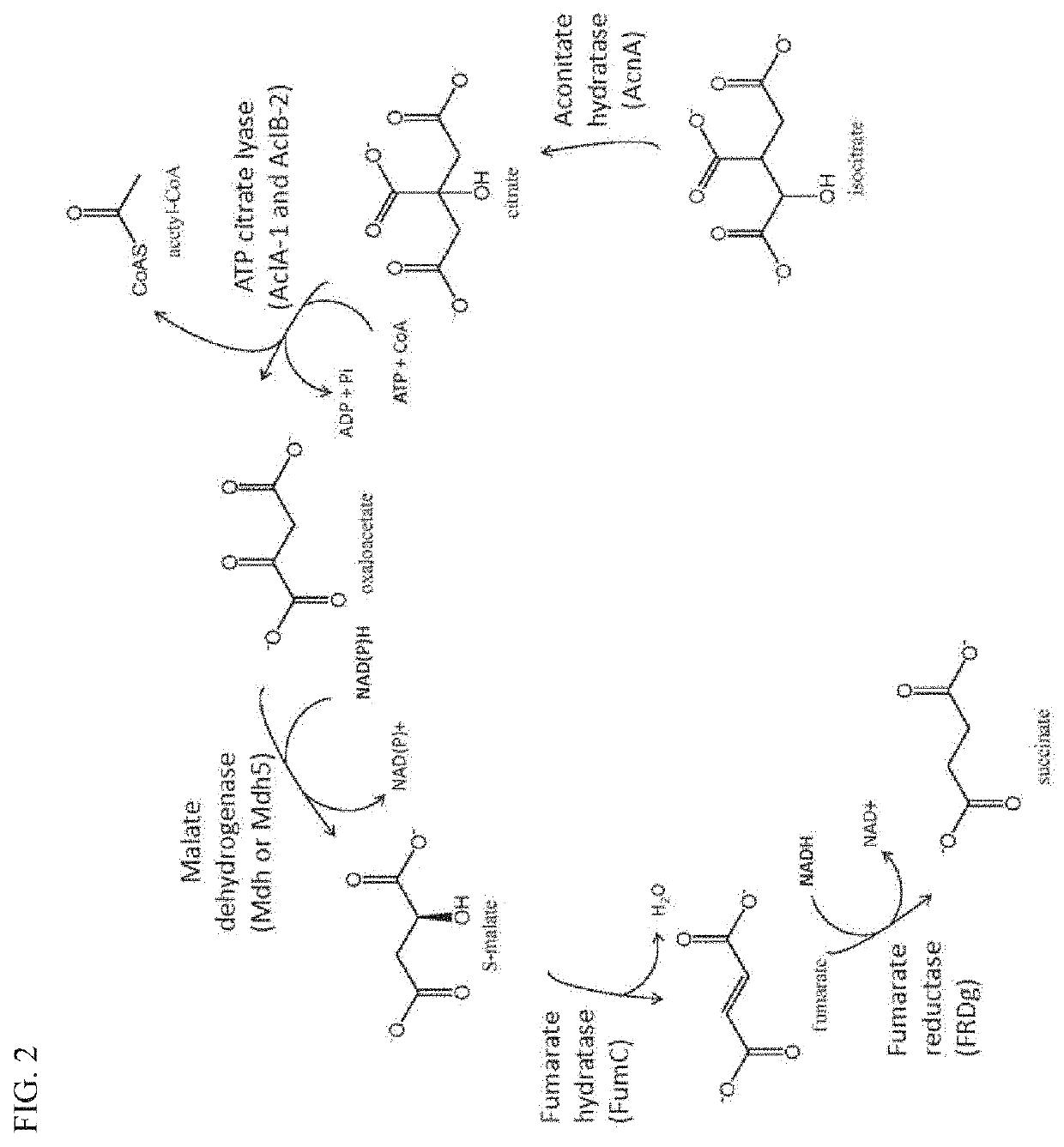Plants with enhanced yield and methods of construction
a technology of plant and yield, applied in the field of plants with enhanced yield and methods of construction, can solve the problems of limited crop productivity, inefficiency of photochemical conversion of light energy to fixed carbon, and inability to achieve the effect of enhancing the yield of desirable crop traits, increasing biomass yield, and increasing seed yield
- Summary
- Abstract
- Description
- Claims
- Application Information
AI Technical Summary
Benefits of technology
Problems solved by technology
Method used
Image
Examples
example 1
Construction of Metabolic Enzyme Expression Vectors pMBXS918, pMBXS919, pMBXS994, pMBXS1022, pMBXS1023, and pMBXS1024
[0143]Plasmids pMBXS918, pMBXS919, pMBXS994, pMBXS1022, pMBXS1023, and pMBXS1024, are derivatives of pCAMBIA binary vectors (Centre for Application of Molecular Biology to International Agriculture, Canberra, Australia) and were constructed using conventional molecular biology and cloning techniques. The transgenes encoded by these plasmids are listed in TABLE 2. The enzyme activities, substrates, and metabolic pathways are shown in FIGS. 1 and 2.
[0144]Maps illustrating the metabolic enzyme encoding genes and plant expression elements for directing their expression in plants in the plasmid vectors pMBXS918, pMBXS919, pMBXS1022, pMBXS1023, and pMBXS1024 are shown in FIGS. 3-7. Plasmid vectors pMBXS1022 and pMBXS994 have the same metabolic enzymes but differ in the expression of green fluorescent protein (GFP) for visual selection of transformants. pMBXS1022 has two exp...
example 2
Generation of Camelina Nuclear Transformants Expressing Metabolic Enzymes to Increase Yield
[0146]In preparation for plant transformation experiments, seeds of Camelina sativa germplasm 10CS0043 (abbreviated WT43, obtained from Agriculture and Agri-Food Canada) were sown directly into 4 inch pots filled with soil in the greenhouse. Growth conditions were maintained at 24° C. during the day and 18° C. during the night. Plants were grown until flowering. Plants with a number of unopened flower buds were used in ‘floral dip’ transformations.
[0147]Agrobacterium strain GV3101 (pMP90) was transformed with the construct of interest using electroporation. A single colony of GV3101 (pMP90) containing the construct of interest was obtained from a freshly streaked plate and was inoculated into 5 mL LB medium. After overnight growth at 28° C., 2 mL of culture was transferred to a 500-mL flask containing 300 mL of LB and incubated overnight at 28° C. Cells were pelleted by centrifugation (6,000 r...
example 3
Screening of Transgenic Plants and Identification of Plants with Higher Yield
[0149]Transgenic plant lines produced using the different plasmid vectors and vector combinations are shown in TABLE 3 together with the analysis of the yield of the T2 generation seed from each line.
TABLE 3T2 Seed yield in lines of Camelina transformed with one genetic construct to enhance yield.%seed comparedTransformedyieldto vectorLinePlasmids(g)controlWild-type 1 3.02 ± 1.36 87%JS112pMBXS01233.49 ± 1.30100%14-1721pMBXS9183.60103%14-1722pMBXS9182.94 84%14-1645pMBXS9197.20206%14-1646pMBXS9193.23 92%14-1686pMBXS9194.47128%14-1621pMBXS9946.42184%14-1635pMBXS10226.36182%14-1636pMBXS10226.72192%1 Wild-type seed yield values are an average of 5 plants.2JS11 seed yield values are an average of 18 plants.3Vector control containing the bar gene.
[0150]Seed weight yield was determined by harvesting all of the mature seeds from a plant and drying them in an oven with mechanical convection set at 22° C. for two days...
PUM
 Login to View More
Login to View More Abstract
Description
Claims
Application Information
 Login to View More
Login to View More - R&D
- Intellectual Property
- Life Sciences
- Materials
- Tech Scout
- Unparalleled Data Quality
- Higher Quality Content
- 60% Fewer Hallucinations
Browse by: Latest US Patents, China's latest patents, Technical Efficacy Thesaurus, Application Domain, Technology Topic, Popular Technical Reports.
© 2025 PatSnap. All rights reserved.Legal|Privacy policy|Modern Slavery Act Transparency Statement|Sitemap|About US| Contact US: help@patsnap.com



